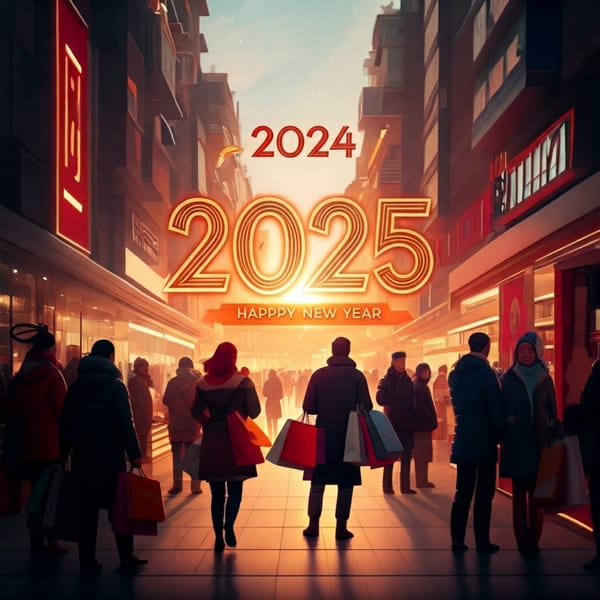Navigating the Future of Third-Party Logistics (3PL) in 2024: Trends and Transformations

The Third-Party Logistics (3PL) industry is set for transformative changes in 2024, shaped by advancements in technology and evolving market demands. As e-commerce continues to grow, the role of 3PL providers in the global supply chain is becoming increasingly critical. Here, we delve into the key trends and challenges that are expected to define the 3PL landscape in 2024, drawing insights from recent industry analyses.
Automation and Space Optimization
One of the most pressing issues facing 3PL providers today is the efficient utilization of warehouse space. With nearly 60% of 3PL providers operating at over 90% of their warehouse capacity, the need for innovative solutions to optimize space utilization has never been greater. Automation technologies, such as the AutoStore system, are emerging as a key solution, allowing companies like Zeek Logistics and Active Ants to significantly increase their storage capacity without expanding their physical footprint. This trend towards automation not only addresses the challenge of limited warehouse space but also enhances operational efficiency and speed.
Rising Fulfillment Costs and Competitive Pressures
The 3PL industry is also grappling with rising fulfillment costs and increased competition. Labor, real estate, and fuel costs are all contributing factors to the shrinking profit margins within the sector. To counter these challenges, 3PL providers are turning to technological solutions, including warehouse management systems (WMS) and order management systems (OMS), to streamline their operations. These systems offer speed, efficiency, and scalability, enabling providers to meet the growing demand for customized solutions and faster delivery times without compromising on profitability.
Emerging Technologies and Innovations
Blockchain technology and advanced analytics are set to play a pivotal role in the future of 3PL. Blockchain enhances transparency and security in shipment tracking, while analytics and AI predict customer demands and optimize routes. Additionally, digital platforms are consolidating fragmented markets, ensuring consistent service standards across the board. These technological advances are enabling 3PL providers to be more agile and responsive, reducing operational costs and improving service delivery.
The Top Trends Shaping 3PL in 2024
The 3PL industry in 2024 will be characterized by several key trends, including inventory management, digital warehousing, robotics, sustainable logistics, and last-mile delivery improvements. Innovations in inventory management, such as IoT sensors and cloud-based systems, are making real-time inventory tracking and predictive stock-level optimization a reality. Robotics are automating a large volume of warehouse tasks, from goods movement to sorting and packing, addressing labor shortages and improving accuracy. Meanwhile, sustainable logistics practices are being adopted to address environmental concerns, showcasing the industry's commitment to eco-friendly operations.
Conclusion
As we look towards 2024, it's clear that the 3PL industry is on the cusp of significant change. The adoption of automation, the integration of advanced technologies, and a focus on sustainability are all driving the evolution of the sector. For 3PL providers, staying ahead of these trends will be key to navigating the challenges and capitalizing on the opportunities presented by the expanding e-commerce landscape. As the industry continues to evolve, the ability to adapt and innovate will be critical for success in the competitive and dynamic world of third-party logistics.
FAQs on 3PL Trends and Transformations in 2024
1. What role does automation play in the 3PL industry for 2024?
Automation is revolutionizing the 3PL industry by maximizing warehouse space utilization and enhancing operational efficiency. Systems like AutoStore have allowed companies to significantly increase their storage capacity without needing to expand their premises, addressing the issue of operating at near-full warehouse capacity.
2. What are the main challenges 3PL providers are facing in 2024?
3PL providers are navigating through rising fulfillment costs and intense competition. Factors like increased labor costs, high real estate prices, and the fluctuating cost of fuel are squeezing profit margins. Providers are turning to technological innovations to streamline their operations and stay competitive.
3. How are blockchain and analytics transforming 3PL services?
Blockchain technology is enhancing the transparency and security of shipment tracking, while advanced analytics and AI are optimizing routes and predicting customer demands. These technologies are making 3PL operations more agile and responsive, which is crucial for reducing costs and improving service quality.
4. Can you outline the top trends impacting the 3PL industry in 2024?
Significant trends shaping the 3PL sector include inventory management enhancements, digital warehousing advancements, increased use of robotics, the adoption of sustainable logistics practices, and innovations in last-mile delivery solutions. These trends are driven by the need for greater efficiency, sustainability, and meeting the demands of a booming e-commerce sector.
5. What is the importance of sustainable logistics in 3PL?
Sustainable logistics is becoming a priority for 3PL providers, focusing on reducing environmental impact through measures like electrification of delivery vehicles, optimizing routes to minimize fuel consumption, and adopting reusable packaging. These efforts are part of a broader industry move towards more eco-friendly operations.
6. How are robotics being utilized within 3PL operations?
Robotics are being deployed to automate various warehouse tasks, helping to address labor shortages and improve accuracy in inventory handling. From collaborative robots assisting human workers to advanced sorting robots enhancing the speed and precision of order fulfillment, robotics are key to boosting productivity and operational resilience in the 3PL industry.




